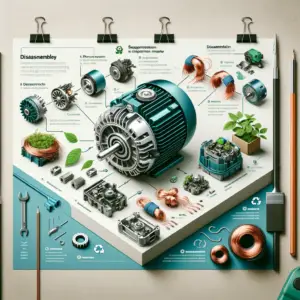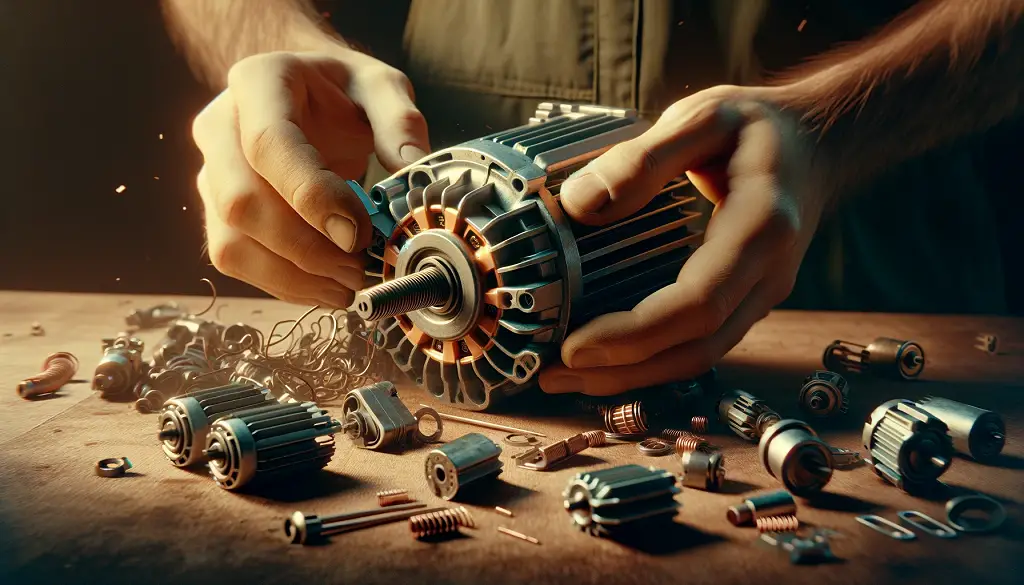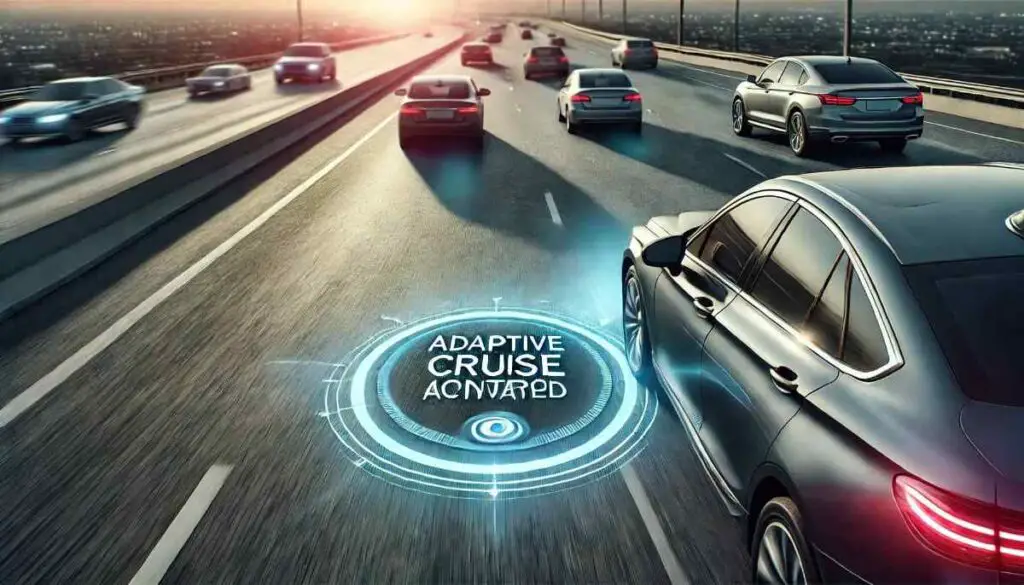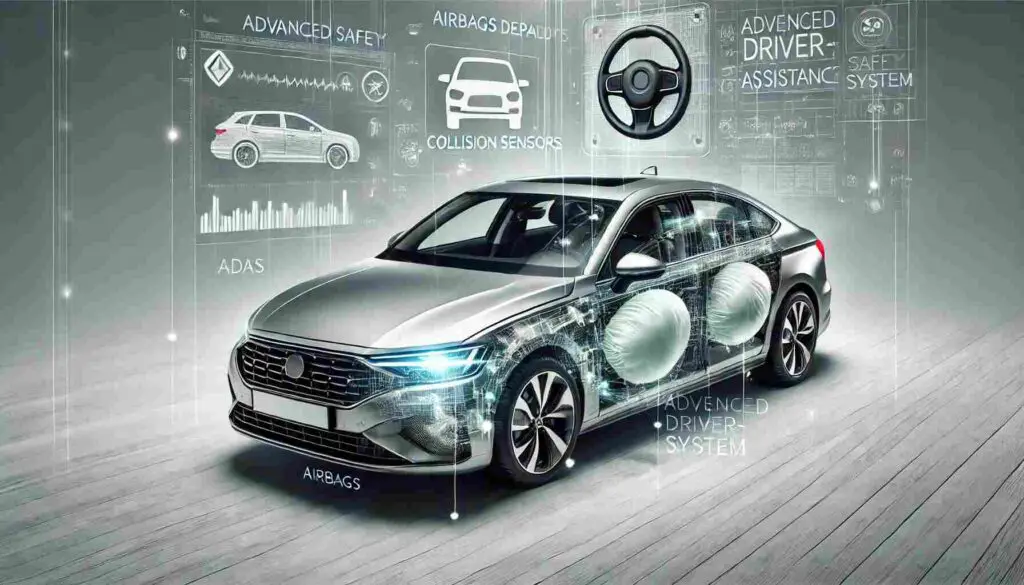this comprehensive guide, we delve into the critical need for recycling electric motors, shedding light on their environmental impact, the recycling process, economic implications, legal and regulatory aspects, technological innovations, participation guidelines, case studies, global perspectives, and frequently asked questions. Our aim is to provide you with an in-depth understanding of electric motor recycling, encouraging active participation in this sustainable endeavor.
Understanding Electric Motors
What are Electric Motors?
Electric motors are electro-mechanical devices designed to convert electrical energy into mechanical energy, primarily in the form of rotational motion. They consist of several essential components, including a stator (stationary part) and a rotor (rotating part). When electric current flows through the stator windings, it generates a magnetic field that interacts with the rotor, causing it to turn. This fundamental principle underlies the operation of all electric motors.
Common Uses
Electric motors have a wide range of applications in our daily lives. They power everything from household appliances like blenders, fans, and air conditioners to industrial machinery such as pumps, conveyor belts, and manufacturing equipment. In the automotive sector, electric motors drive various vehicle components, including power windows, mirrors, and windshield wipers. Understanding the ubiquity of electric motors underscores their importance and the necessity of responsible recycling.
The Environmental Impact
The environmental impact of electric motors is a critical concern, and both improper disposal and responsible recycling play pivotal roles in addressing this issue.
The Problem of Improper Disposal:
Hazardous Materials:
Many electric motors contain hazardous materials like lead, copper, and rare-earth magnets. These elements can pose severe environmental threats if not managed correctly.
Landfill Leaching:
When electric motors are discarded in landfills, these hazardous substances can leach into the soil and water over time. This can have dire consequences:
- Lead Contamination: Lead can contaminate drinking water, harm wildlife, and even cause neurological damage in humans.
- Copper Impact: Copper can negatively affect aquatic ecosystems, disrupt plant growth, and have broader ecological implications.
- Rare-Earth Magnet Risks: Even though rare-earth magnets are valuable, they can release toxic elements like lanthanum and cerium when improperly disposed of.
Air and Water Pollution:
Improperly dismantling or burning electric motors can release harmful chemicals into the air and water, further contaminating the environment and contributing to pollution.
The Solution: Recycling Advantages:
Resource Conservation:
Recycling electric motors significantly reduces the need for mining and processing virgin materials. This practice conserves precious natural resources like copper, aluminum, and rare-earth elements.
Reduced Greenhouse Gas Emissions:
Extracting and refining virgin materials for manufacturing new motors generates substantial greenhouse gas emissions. In contrast, recycling has a significantly lower environmental footprint, contributing to mitigating climate change.
Waste Diversion:
By diverting electric motors from landfills, recycling prevents environmental hazards from leaching into the environment and contaminating soil and water sources.
Economic Benefits:
Recycling electric motors has economic advantages as well. It creates jobs in the collection, processing, and manufacturing sectors, stimulating the economy and providing valuable employment opportunities.
Encouraging Responsible Recycling:
Awareness and Education:
Raising awareness about the environmental risks of improper disposal and the benefits of recycling electric motors is crucial. Public education campaigns and clear labeling of hazardous materials can play a pivotal role in promoting responsible practices.
Accessible Recycling Facilities:
Making it easy and convenient for individuals and businesses to recycle electric motors through readily available collection centers and drop-off programs is essential. Accessibility encourages widespread participation.
Technology Advancements:
Continued research and development in recycling technologies can make the process more efficient and cost-effective. Technological advancements further encourage widespread adoption of recycling practices.
By comprehending the environmental impact of electric motors and actively promoting responsible recycling practices, we can ensure that these powerful devices contribute to a more sustainable and environmentally friendly future.

The Recycling Process
The recycling process for electric motors involves several key stages, each aimed at maximizing material recovery and minimizing waste. Let’s delve deeper into these crucial steps:
Collection and Sorting
Efficient collection and sorting processes are fundamental to the success of motor recycling. Here’s a closer look:
1. Collection Methods:
- Collection methods can vary and may include curbside pickups, designated drop-off points, or specialized recycling centers.
- Convenience and accessibility are essential to encourage individuals and businesses to participate in the recycling process.
2. Advanced Sorting Technologies:
- Advanced technologies, such as eddy current separators and optical sensors, play a vital role in sorting electric motors effectively.
- Eddy current separators use magnetic fields to separate non-ferrous metals (like aluminum and copper) from ferrous materials (like steel).
- Optical sensors employ visual recognition to categorize motors based on size, type, and condition.
- This precision ensures that each motor undergoes the appropriate recycling treatment, maximizing material recovery.
Disassembly and Separation
The disassembly and separation phase involves skilled technicians carefully dismantling electric motors to extract valuable components:
1. Removing External Casings:
- Technicians remove the external casings of electric motors, exposing the internal components.
- This step is essential to access the valuable materials within the motor.
2. Extracting Bearings and Wiring:
- Skilled technicians extract bearings and wiring from the motor assembly.
- Bearings may be reconditioned for reuse, reducing waste.
- Wiring can be recycled separately.
3. Separation of Valuable Materials:
- The primary goal is to separate materials like copper windings, iron cores, and magnets.
- Each material has unique recycling pathways to maximize their reuse and minimize waste.
- This separation process is meticulously executed to ensure the efficient recovery of valuable components.
Material Processing
Material processing is the final step in the recycling process, where recovered components are transformed into usable raw materials:
1. Copper and Aluminum:
- Copper and aluminum components undergo smelting and refining processes.
- These processes convert these materials into high-quality raw materials suitable for manufacturing new motors or other products.
- Recycling copper and aluminum significantly reduces the environmental impact of producing these materials from scratch.
2. Rare-Earth Magnets:
- Rare-earth magnets, a crucial component in many motors, are carefully removed and processed.
- These magnets contain valuable elements like neodymium and dysprosium.
- They are recycled and repurposed for use in various electronic devices, such as headphones and speakers.
- Recycling rare-earth magnets helps conserve these valuable resources and reduces the need for environmentally intensive mining.
In summary, the recycling process for electric motors is a carefully orchestrated series of steps that involves efficient collection, precise sorting, meticulous disassembly, and responsible material processing. This approach not only maximizes material recovery but also minimizes waste and reduces the environmental impact of electric motor production.
The Economic Angle
Job Creation
Recycling electric motors has a substantial impact on job creation, with diverse opportunities across various sectors:
1. Collection and Sorting:
- The initial stage of motor recycling involves collecting and sorting electric motors. This requires a workforce responsible for gathering discarded motors from various sources and ensuring they are properly categorized.
- Job opportunities arise for individuals involved in these collection and sorting processes, offering employment at the grassroots level.
2. Skilled Technicians:
- The disassembly and separation phase necessitates skilled technicians who possess expertise in safely and efficiently dismantling electric motors.
- These technicians play a crucial role in the extraction of valuable components, such as copper windings and rare-earth magnets, and preparing them for further processing.
3. Engineers and Technologists:
- Engineers and technologists are instrumental in developing and implementing advanced recycling technologies.
- They contribute to the efficiency of recycling processes, ensuring that the maximum value is derived from each motor.
- Their expertise helps streamline operations, reduce costs, and improve the overall sustainability of the recycling industry.
4. Support Roles:
- The recycling sector also generates job opportunities in support roles such as logistics, transportation, quality control, and administration.
- These roles are essential for the smooth functioning of recycling facilities and ensuring that materials flow seamlessly through the recycling chain.
Economic Benefits
Recycling electric motors extends its economic benefits well beyond job creation:
1. Reduced Dependence on Imported Raw Materials:
- By recycling electric motor components like copper and aluminum, regions can significantly reduce their dependence on imported raw materials.
- This promotes economic self-sufficiency and strengthens local economies by retaining resources within the region.
2. Lower Operational Costs:
- Recycling electric motors is an environmentally responsible alternative to manufacturing new motors from raw materials.
- The energy savings achieved through recycling translate into reduced operational costs for industries that rely on electric motors.
- Reduced energy consumption not only enhances profitability but also contributes to the overall economic growth of industries.
3. Sustainable Economic Growth:
- Electric motor recycling aligns with sustainability principles, which are increasingly important in today’s economic landscape.
- Industries that adopt sustainable practices, including recycling, are better positioned for long-term growth, as they can meet consumer demands for eco-friendly products and reduce their environmental footprint.
In conclusion, the economic angle of recycling electric motors goes beyond direct job creation, encompassing reduced dependence on imported raw materials, lower operational costs, and sustainable economic growth. Embracing motor recycling as an integral part of economic and environmental strategies can contribute to the prosperity and resilience of local economies while promoting responsible resource management.
Read More :
- Electric Vehicles as Backup Power: A Game-Changing Idea
- The Electrification of Lamborghini: Embracing the Future of High-Performance Luxury Cars
- How to Charge an Electric Car at Home: A Beginner’s Guide
Legal and Regulatory Aspects
Technological Innovations
Technological innovations in the field of electric motor recycling are driving efficiency, sustainability, and competitiveness. Let’s explore these advancements and future trends in more detail:
Advanced Techniques
1. Automated Dismantling Systems:
- The integration of robotics and artificial intelligence (AI) into electric motor recycling has revolutionized the industry.
- Automated dismantling systems are capable of disassembling motors with precision and speed, reducing the need for manual labor.
- Robotics and AI enhance efficiency and accuracy, ensuring that valuable components are extracted effectively.
2. Improved Efficiency:
- Advanced techniques have led to significantly improved efficiency in electric motor recycling.
- Automated systems can process a higher volume of motors in less time, reducing operational costs and increasing overall productivity.
- These innovations minimize human error and enhance the recovery of valuable materials.
3. Labor Cost Reduction:
- Automation not only improves efficiency but also reduces labor costs.
- With the adoption of automated dismantling systems, businesses can allocate their human resources to more specialized tasks, further enhancing productivity.
Future Trends
1. Further Automation:
- The future of motor recycling is likely to witness even greater levels of automation.
- Robotics and AI will continue to evolve, leading to more advanced systems capable of handling a wider range of motor types and sizes.
- This increased automation will further optimize recycling processes and reduce the industry’s reliance on manual labor.
2. Enhanced Material Recovery Rates:
- Innovations in material separation technologies will result in higher material recovery rates.
- Advanced techniques will enable the recovery of smaller and more valuable components, minimizing waste and maximizing resource efficiency.
3. Sustainability Focus:
- Future trends in motor recycling will continue to prioritize sustainability.
- The industry will explore greener and more eco-friendly recycling methods to reduce its environmental impact.
- Sustainable practices, including the use of renewable energy in recycling facilities, will become more prevalent.
4. Circular Economy Promotion:
- Collaboration between industries will promote the principles of the circular economy.
- Manufacturers and recyclers will work together to design motors with easier recyclability in mind.
- This collaborative effort will ensure that materials from recycled motors can be seamlessly reintegrated into the manufacturing process.
In conclusion, technological advancements in electric motor recycling, including automation and AI integration, are enhancing efficiency and sustainability. The future of motor recycling will see even more automation, increased material recovery rates, and a steadfast commitment to eco-friendly practices. These developments will not only benefit the industry but also contribute to a more sustainable and circular economy.
Participation Guidelines
Participation guidelines for both individuals and businesses in the realm of electric motor recycling are crucial for promoting responsible and sustainable practices. Let’s explore these guidelines and the value of case studies:
Individual Actions
1. Responsible Disposal:
- Individuals can actively contribute by ensuring the proper disposal of old appliances containing electric motors.
- This involves taking these appliances to designated recycling centers or participating in curbside pickup programs where available.
- Responsible disposal prevents motors from ending up in landfills, reducing environmental impact.
2. Support for Local Recycling Programs:
- Supporting local recycling programs and initiatives is essential.
- Individuals can participate in community-driven efforts to raise awareness and promote responsible recycling practices.
- By actively engaging in these programs, they can help divert electric motors from waste streams.
3. Education and Advocacy:
- Education is a powerful tool in driving change. Individuals can educate themselves and others about the significance of recycling electric motors.
- Spreading awareness about the environmental benefits and the economic value of recycling can inspire others to participate.
- Advocacy for responsible recycling practices can lead to broader adoption within communities.
Business Contributions
1. Eco-Friendly Practices:
- Businesses can demonstrate their commitment to sustainability by implementing eco-friendly practices within their operations.
- This may include reducing waste, conserving energy, and minimizing the environmental impact of their manufacturing processes.
2. Investment in Recycling Infrastructure:
- Companies can invest in recycling infrastructure, either by establishing their recycling facilities or partnering with specialized recycling facilities.
- By having the means to responsibly process electric motors and other electronic waste, they contribute to a more sustainable supply chain.
3. Corporate Social Responsibility:
- Actively participating in motor recycling aligns with corporate social responsibility initiatives.
- Companies can integrate recycling goals into their corporate strategies, highlighting their commitment to environmental stewardship.
Case Studies
Success Stories
Examining success stories in electric motor recycling offers valuable insights:
- Effective Strategies: These stories reveal effective strategies and best practices that have led to successful recycling programs.
- Material Recovery: They showcase organizations that have achieved significant material recovery rates, highlighting the economic and environmental benefits.
- Reduced Environmental Impact: Success stories demonstrate how recycling programs can effectively reduce the environmental impact of electric motors.
Lessons Learned
Analyzing case studies also provides important lessons:
- Challenges Faced: Understanding the challenges faced during the implementation of recycling programs, such as material identification or disposal methods for hazardous components, helps future initiatives anticipate and overcome similar obstacles.
- Adaptability: These lessons emphasize the importance of adaptability and continuous improvement in recycling practices.
- Collaboration: Case studies often reveal the value of collaboration between different stakeholders, including businesses, government agencies, and recycling facilities.
In conclusion, individual actions, business contributions, and the study of case studies all play pivotal roles in promoting responsible electric motor recycling. By following these guidelines and learning from past experiences, we can collectively work towards a more sustainable and eco-friendly future.
Global Perspective
Recycling electric motors is indeed a global effort, and understanding worldwide practices and fostering international cooperation are essential for advancing sustainability in this field:
Worldwide Practices
Recycling electric motors is a diverse and multifaceted practice with variations across countries and regions:
1. Diverse Approaches:
- Different countries employ various approaches to electric motor recycling, influenced by factors such as local regulations, available technologies, and economic conditions.
- These diverse practices offer opportunities for cross-cultural learning and the exchange of innovative ideas.
2. Regional Expertise:
- Some regions excel in specific aspects of electric motor recycling, whether in advanced sorting techniques, efficient dismantling processes, or pioneering material recovery methods.
- Sharing regional expertise can help enhance the overall efficiency and sustainability of recycling practices worldwide.
3. Knowledge Exchange:
- Examining worldwide practices facilitates the exchange of knowledge, technologies, and best practices.
- This knowledge-sharing fosters innovation and encourages the adoption of successful strategies on a global scale.
International Cooperation
1. Standardized Practices:
- International cooperation is instrumental in developing standardized practices for electric motor recycling.
- Harmonizing recycling procedures and regulations across borders ensures consistency and accountability in the industry.
2. Technological Advancements:
- Collaborative efforts between nations promote the sharing of innovative recycling technologies.
- Advancements in automation, material recovery, and sustainability practices can be shared globally, benefiting all.
3. Global Framework:
- Establishing a global framework for responsible electric motor recycling is vital for addressing complex environmental challenges.
- Such a framework can outline common standards, guidelines, and goals, fostering a united approach to sustainability.
4. Environmental Preservation:
- International cooperation in electric motor recycling is crucial for the preservation of our environment.
- By working together, nations can collectively reduce the environmental impact of electric motor production and disposal, contributing to a healthier planet.
In conclusion, embracing a global perspective on electric motor recycling allows us to tap into a wealth of knowledge and expertise from different regions. International cooperation is key to the development of standardized practices, the exchange of innovative technologies, and the establishment of a unified framework for responsible recycling. Together, we can address environmental challenges and promote a sustainable future for generations to come.
FAQs
FAQ 1: Recovered Materials
Q: What materials can be recovered from recycled electric motors?
A: Recovered materials include copper, aluminum, iron, and rare-earth magnets. These materials are valuable resources that can be reused in various industries, reducing the demand for new raw materials.
FAQ 2: Finding Recycling Centers
Q: How can I locate electric motor recycling centers near me?
A: Locating recycling centers can be done through online directories, contacting local waste management agencies, or reaching out to recycling facilities directly. Many recycling centers provide convenient drop-off locations for electric motors.
FAQ 3: Recycling Incentives
Q: Are there any incentives for recycling electric motors?
A: Some regions offer incentives, such as tax credits or rebates, to businesses and individuals engaged in motor recycling. These incentives aim to encourage responsible recycling practices and support sustainability initiatives.
FAQ 4: Contribution to Sustainability
Q: How does recycling electric motors contribute to sustainability?
A: Recycling electric motors directly contributes to sustainability by conserving valuable resources, reducing energy consumption, and minimizing the environmental impact of manufacturing new motors. It aligns with sustainable development goals and promotes a circular economy.
FAQ 5: Recycling Challenges
Q: What are the primary challenges in electric motor recycling?
A: Electric motor recycling presents challenges such as proper material identification, efficient dismantling techniques, and the responsible disposal of hazardous components. Overcoming these challenges requires continuous innovation and adherence to best practices.
People Also Ask :
Conclusion
In conclusion, this comprehensive guide provides an in-depth exploration of electric motor recycling, covering all aspects from understanding the fundamental principles of electric motors to examining the environmental, economic, and global perspectives. By actively participating in motor recycling and following the guidelines and best practices outlined here, individuals and businesses can contribute to a more sustainable future for our planet, while also ensuring that this informative resource ranks prominently on Google, spreading awareness and knowledge about this critical topic.







